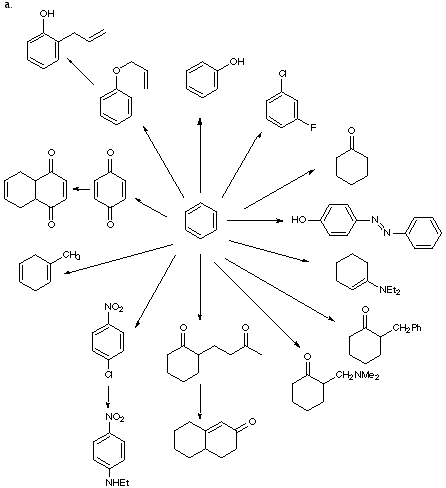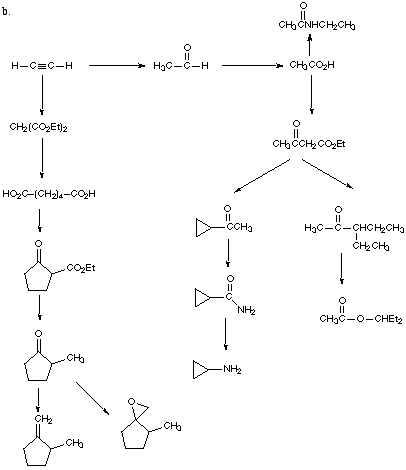![]()
![]()
Chapter 28 Workshop Problems
Nucleic Acids / Exam Review
1. The informational strand of a DNA contains the base sequence shown below (written in the standard 5' to 3' direction).
C G T T A C C T A C A A G C C T G T
a) Indicate the base sequence that would match this in the DNA complementary strand.
b) Indicate the base sequence in the m-RNA that would be transcribed.
c) When the message is translated into peptide synthesis, describe each of the tRNAs that would be called for, in terms of their anticodons and the aminoacids they would bring in.
d) There are 6 C bases in the original DNA sequence written
above. Number them 1 to 6.
A mutation of C to T might cause no change, a minor change, or
a drastic change.
For the six cases of C, categorize the change that would result
if one C were changed to a T.
2. Show how to carry out the synthetic conversions indicated in an efficient manner. If more than one step is required, show the products for each step. Make as many synthetic connections as possible with products on the periphery of the starburst.


c. 
3. Treatment of the compound shown below with iodomethane led to the formation of two isomeric products, A and B. When each of these was treated first with Ag2O/H2O followed by heating, there was formed the same mixture of compounds C and D. Compound C could be resolved into enantiomers but D could not.
a. Provide structures for A and B and indicate the structural relationship between them.
b. Provide structures for C and D.
4. Arrange the following molecules in order of decreasing rate of reactivity toward excess aqueous 0.1 N NaOH solution.